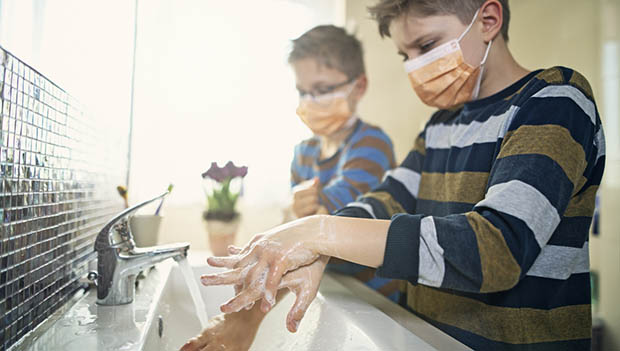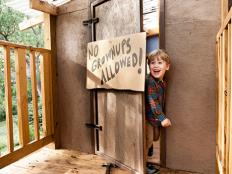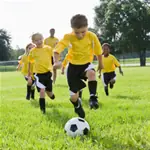
The back to school season is usually filled with shopping trips for school supplies and meet the teacher nights. This school year, however, set amidst the backdrop of a pandemic, will be like no other—and back to school won't look like it has in years past.
There are a lot of nerves around going back to school this year, and that's why it's important to prepare your child for what school will be like when they head back this fall. While every school district's safety protocol may be a little different, here are some common changes that districts are making in response to COVID-19. Review them with your kids so they'll know what to expect on the first day of school.
Of course, be sure to check with your kids' own school district's safety rules and protocols before heading back for the first day, and always keep up to date with local guidelines.
No Parents in the Building
To reduce the number of people in the school building (and therefore reduce exposure), many schools are not letting parents enter the building. That means if you typically escort your child to their classroom, things will likely be different this year. Prepare your child for a new drop-off routine so they aren't surprised on their first day back at school.Temperature Checks
While it's not possible to test every student for COVID at most schools, there's a good chance that the school staff will take your child's temperature when they arrive at school as a way to identify children that may be sick with the virus. Let your child know that the process will be quick and pain-free and has been put in place to keep everyone healthy.Mask Requirements
The American Academy of Pediatrics (AAP) recommends that all teachers and students in middle school or older wear masks while at school, including on the bus. Especially for younger children, seeing adults in masks may be scary or intimidating at first. If your child isn't used to seeing others in masks (or if your child is older and not used to wearing a mask), now is the time to prepare them for this change.Space Between Desks and Dividers Between Desks
Your child is probably used to a classroom set up with desks in neat and compact rows or groups of kids gathered around a lab table. This school year, recommendations call for desks to be spaced 3 to 6 feet apart and some schools are taking it a step further and installing plastic dividers between desks, too. Let your child know that social distancing will be the new normal this year.Fewer Students and Staff in the Classroom
Many districts across the country are implementing a split schedule of in-person and virtual learning to keep class sizes smaller. That means your child may not see their best friends as much this year, especially if they are on opposite in-person schedules.
Likewise, the AAP recommends that teachers move classrooms, not students. For older children, that might mean that when the bell rings to indicate the end of class, they'll stay put.
More Outdoor Instruction
Studies have shown that you're much less likely to catch COVID-19 while outside. As such, many schools are shifting to outdoor learning as much as possible. While your child may be used to spending much—or all—of their day inside, prepare them for the possibility of class taking place under the shade of a tree.Lunchtime Will Be Different
Swapping lunchtime goodies is a childhood pastime, but this year sharing lunches is a no-go. Let your child know that sharing food with friends isn't safe right now. On the same token, many schools are ditching the cafeteria all together in favor of having students eat their lunch at their desks, another recommendation of the AAP.Frequent Handwashing and Use of Hand Sanitizer
Handwashing is one of the most effective ways to prevent the spread of COVID-19, and your kids should expect to do a lot of it while at school. Regular use of hand sanitizer will also be the norm, so if your child has any objections, try to overcome them now.One-Way Hallways
Just as grocery stores across the country have implemented one-way aisles for shoppers, the AAP is encouraging schools to implement one-way hallways and stairwells for students. Your child may be used to zipping around school, taking the fastest route possible to beat the bell, but let them know that this year they may need some extra time to make it to class.
Finally, it's a good idea to prepare your child for the fact that school could end abruptly like it did last year should the virus worsen or if there is an outbreak at their school. This year, flexibility is the name of the game. If you child can get comfortable with unpredictability, they'll be able to survive, and even thrive, during a school year that is sure to make the history books.
READ THIS NEXT: Questions to Ask Your Child's Teacher as Back to School Approaches









Discuss This Article